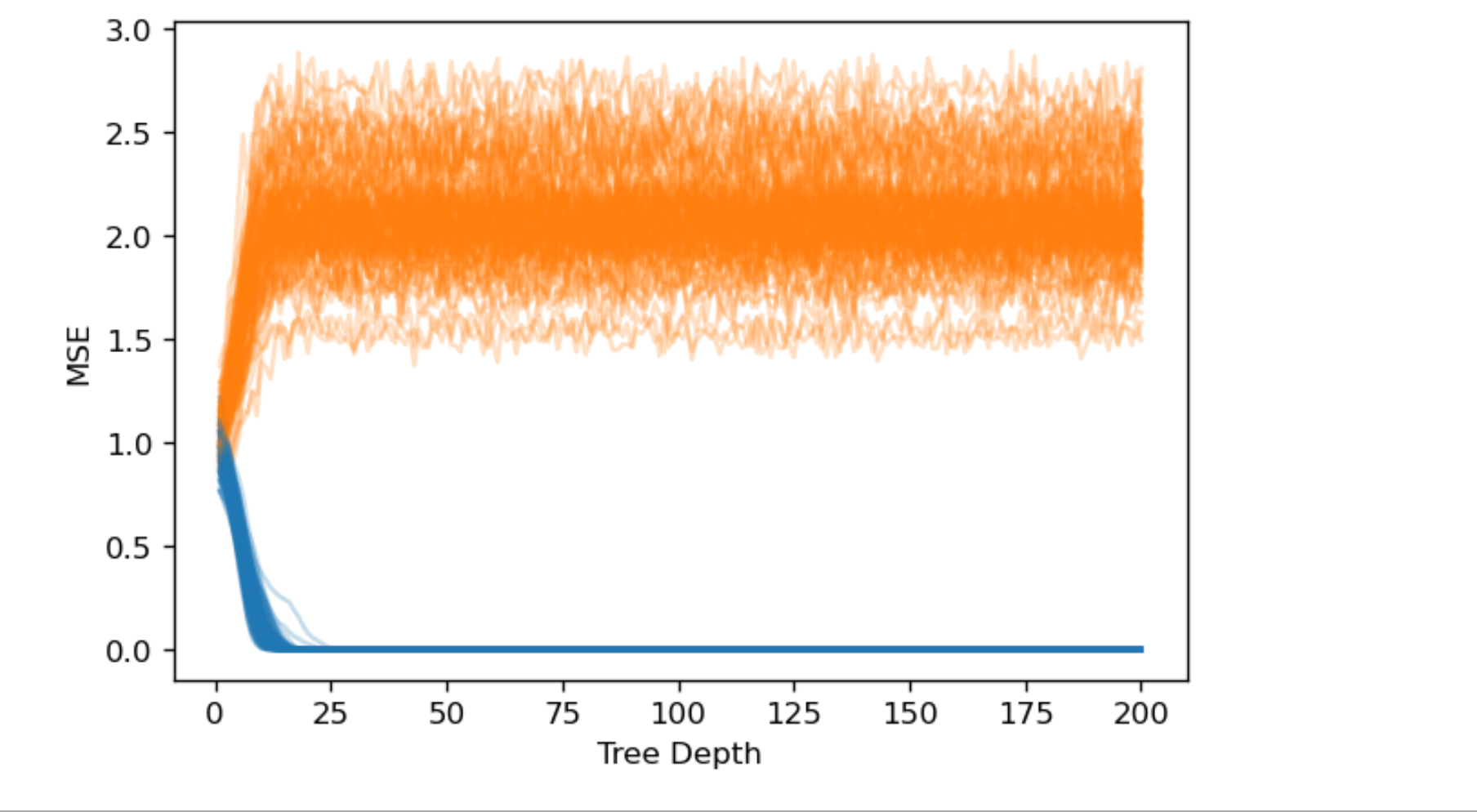Imagine that we have a supervised learning setting. Training data is given by the input-output pairs $(\mathbf{x}_n, y_n)$ for $n=1,\dotsc,N$ and similarly, the test data $(\mathbf{x'}_n, y'_n)$ for $n=1,\dotsc,N'$. Rather typical setting. Further we can assume that we have $D$ features and that $y_n \in \mathbb{R}$ and $\mathbf{x}_n \in \mathbb{R}^D$. Now, the idea is to employ a recursive binary splitting in order to obtain a nested sequence of regression trees of increasing size.
Now, what would happen if there was NO true relationship between $y$ and $\mathbf{x}$? Say, I currently have a tree of some size $M$, what would happen to training and test MSE if I continued to the tree of size $M+1$? Or if there was a true relationship between $y$ and $\mathbf{x}$ but the relation was not constant (say we don't know how far from constant it is). If I increase the size of the regression tree to $M+1$ in this scenario - can I tell what would happen to training and test MSE?
In general, how does the training and test MSE work in this case? I know that the regression trees are likely to overestimate so in my understanding, if there is a true relation between input and output variables, then when increasing depth of a tree the training MSE should further decrease? But what about the test MSE? Is the MSE curve for that case U-shaped? And how about the case when there is no true relation between inputs and outputs?

